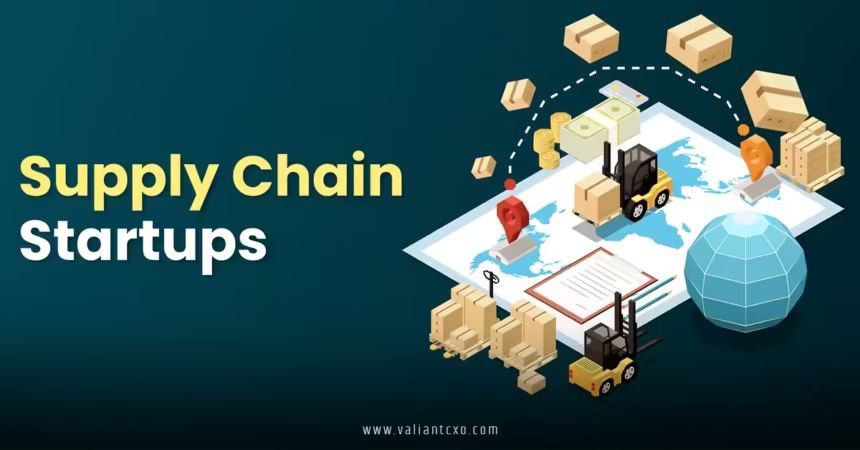Navigating Supply Chain Challenges for U.S. Startups is no small feat in today’s fast-paced, globalized economy. Picture this: you’re a scrappy entrepreneur with a brilliant idea, a tight budget, and a dream to scale your startup into the next big thing. But then, bam! A delayed shipment, a sudden price hike from a supplier, or a global disruption throws a wrench in your plans. Sound familiar? If you’re a U.S. startup founder, you’ve likely felt the sting of supply chain hiccups. In this article, we’ll dive deep into the art and science of navigating supply chain challenges for U.S. startups, offering practical strategies, real-world insights, and a sprinkle of optimism to keep you moving forward.
Why Supply Chain Challenges Hit Startups Hard
Startups, by their very nature, operate on the edge. With limited resources, lean teams, and the pressure to prove themselves, they’re especially vulnerable to supply chain disruptions. Unlike corporate giants with deep pockets and established networks, startups often lack the leverage to negotiate better terms or absorb unexpected costs. So, what makes navigating supply chain challenges for U.S. startups such a unique beast?
Limited Financial Cushion
Let’s be real—most startups are scraping by, pouring every dollar into product development, marketing, or hiring. A single delayed shipment or a supplier jacking up prices can send your budget into a tailspin. For instance, imagine you’re launching a new eco-friendly gadget, but your raw material costs suddenly spike due to tariffs. That’s not just a hiccup; it’s a full-blown crisis when your margins are razor-thin.
Lack of Established Relationships
Big companies have years of trust built with suppliers, giving them priority during shortages. Startups? They’re often the new kid on the block, begging for attention. Without long-term relationships, navigating supply chain challenges for U.S. startups means fighting for scraps when demand outstrips supply.
Global Disruptions Amplify Local Pain
From pandemics to trade wars, global events hit startups hardest. Remember the 2021 chip shortage? It crippled industries, but startups developing tech products were left scrambling while giants like Apple secured their inventory. These macro-level disruptions highlight why navigating supply chain challenges for U.S. startups requires agility and foresight.
Key Supply Chain Challenges for U.S. Startups
Before we dive into solutions, let’s unpack the specific hurdles startups face. Understanding the enemy is half the battle, right?
Rising Costs and Inflation
Inflation has been a buzzword lately, and it’s not just talk. The cost of raw materials, shipping, and labor has skyrocketed. For a U.S. startup, this means every step of the supply chain—from sourcing components to delivering the final product—gets pricier. A 2023 report from the U.S. Chamber of Commerce noted that 78% of small businesses reported increased costs due to supply chain issues. That’s a stat you can’t ignore.
Supplier Reliability Issues
Finding a reliable supplier is like dating—you might kiss a few frogs before finding “the one.” Startups often work with smaller or untested suppliers to keep costs down, but this can backfire. Late deliveries, poor quality, or sudden closures can derail your entire operation.
Logistics and Transportation Bottlenecks
Ever heard of the Suez Canal blockage? One ship got stuck, and the ripple effects hit global trade hard. For U.S. startups, domestic issues like port congestion or truck driver shortages add to the chaos. Navigating supply chain challenges for U.S. startups often means wrestling with logistics nightmares that feel out of your control.
Demand Forecasting Woes
Predicting customer demand is like trying to read a crystal ball. Overstock, and you’re stuck with unsold inventory eating up cash. Understock, and you’re turning away customers. Startups, with their limited data and experience, often struggle to get this right, making supply chain planning a gamble.
Strategies for Navigating Supply Chain Challenges for U.S. Startups
Now that we’ve laid out the problems, let’s talk solutions. Navigating supply chain challenges for U.S. startups isn’t about waiting for the storm to pass—it’s about learning to dance in the rain. Here are actionable strategies to keep your startup thriving.
Build a Resilient Supplier Network
Diversify Your Suppliers
Putting all your eggs in one supplier’s basket is a recipe for disaster. Instead, spread your risk by working with multiple suppliers across different regions. For example, if you’re sourcing components for a tech product, consider suppliers in both Asia and Latin America. This way, if one region faces a disruption (say, a factory shutdown), you’ve got a backup plan.
Vet Suppliers Thoroughly
Don’t just pick the cheapest option. Check a supplier’s track record, financial stability, and ability to scale. Ask for references, visit their facilities if possible, or at least hop on a video call. Building trust early saves headaches later.
Embrace Technology for Transparency
Leverage Supply Chain Software
Tools like Fishbowl Inventory or NetSuite can give startups real-time visibility into their supply chain. These platforms track inventory, monitor supplier performance, and even predict demand using AI. It’s like having a crystal ball, but better—because it’s data-driven.
Use Blockchain for Traceability
Blockchain isn’t just for crypto bros. It’s a game-changer for supply chain transparency. By tracking every step of your product’s journey, from raw materials to delivery, you can spot issues early and build trust with customers. Imagine telling your eco-conscious customers exactly where their sustainable sneakers came from—pretty powerful, right?
Optimize Inventory Management
Adopt Just-in-Time (JIT) Inventory
JIT inventory keeps your stock lean, reducing storage costs and minimizing waste. The catch? It requires precise coordination with suppliers. If you’re navigating supply chain challenges for U.S. startups, JIT can be a lifesaver, but only if your suppliers are reliable.
Buffer Stock for Critical Components
For must-have items, keep a small buffer stock to cushion against delays. Think of it like an emergency fund for your supply chain—there when you need it, but not tying up too much cash.
Strengthen Local Partnerships
Source Domestically When Possible
While global suppliers might offer lower costs, domestic sourcing reduces shipping times and risks from international disruptions. Plus, it’s a great selling point for customers who love “Made in the USA.” A 2024 survey by Deloitte found that 65% of businesses are prioritizing nearshoring to boost resilience. Why not join the trend?
Collaborate with Local Startups
Other startups can be your allies. Partner with local manufacturers or logistics providers who understand your hustle. These relationships often come with more flexibility than dealing with massive corporations.
Plan for Disruptions
Create a Risk Management Plan
Hope for the best, but plan for the worst. Map out potential risks—supplier failures, natural disasters, tariff changes—and create contingency plans. For instance, if a key supplier goes under, have a pre-vetted backup ready to go.
Stress-Test Your Supply Chain
Run simulations to see how your supply chain holds up under pressure. What happens if a port closes or a supplier doubles their lead time? Stress-testing helps you spot weak links before they break.
The Role of Communication in Navigating Supply Chain Challenges for U.S. Startups
Communication is the glue that holds a supply chain together. For startups, where every relationship is new, clear and consistent communication can make or break your operations.
Keep Suppliers in the Loop
Share your forecasts, timelines, and challenges with suppliers. Transparency builds trust, and trusted suppliers are more likely to prioritize your orders during crunch times. Think of it like a friendship—you get what you give.
Engage with Customers
If a delay hits, don’t leave your customers in the dark. Be upfront about issues and offer solutions, like discounts or expedited shipping once the product is available. Honesty turns frustrated customers into loyal ones.
How to Scale Without Breaking the Chain
Scaling is the dream, but it’s also where many startups trip up. Navigating supply chain challenges for U.S. startups gets trickier as you grow, but with the right approach, you can scale smoothly.
Start Small, Think Big
Test your supply chain with small batches before going all-in. This lets you iron out kinks without betting the farm. Once you’re confident, scale gradually, keeping an eye on supplier capacity and logistics.
Invest in Talent
As you grow, consider hiring a supply chain manager or consultant. They’ll bring expertise you might not have in-house, helping you navigate complex issues like customs regulations or multi-modal shipping.
Monitor Key Metrics
Track metrics like order fulfillment rates, lead times, and inventory turnover. These numbers tell you where your supply chain is humming and where it’s choking. Data is your co-pilot in navigating supply chain challenges for U.S. startups.
The Future of Supply Chains for U.S. Startups
What’s next for startups tackling supply chain woes? The landscape is evolving, and staying ahead means keeping an eye on trends.
Sustainability as a Priority
Consumers are demanding eco-friendly products, and startups are uniquely positioned to deliver. Use sustainable materials, optimize shipping routes to reduce emissions, and tell your story. Green supply chains aren’t just good for the planet—they’re good for business.
Automation and AI
From predictive analytics to robotic warehouses, technology is reshaping supply chains. Startups that adopt these tools early can outmaneuver bigger competitors, turning agility into a superpower.
Government Support
The U.S. government is stepping up with initiatives to boost domestic manufacturing and ease supply chain bottlenecks. Keep an eye on grants or tax incentives that could give your startup a leg up.
Conclusion
Navigating supply chain challenges for U.S. startups is like steering a ship through stormy seas—it’s tough, but with the right tools and strategies, you can reach calmer waters. By diversifying suppliers, leveraging technology, optimizing inventory, and fostering strong communication, startups can turn obstacles into opportunities. The key is to stay proactive, adaptable, and customer-focused. So, take a deep breath, roll up your sleeves, and start building a supply chain that’s as resilient as your entrepreneurial spirit. You’ve got this!
FAQs
1. What are the biggest hurdles in navigating supply chain challenges for U.S. startups?
The biggest hurdles include rising costs, unreliable suppliers, logistics bottlenecks, and inaccurate demand forecasting. Startups often lack the resources to absorb these shocks, making strategic planning essential.
2. How can technology help in navigating supply chain challenges for U.S. startups?
Technology like inventory management software, AI-driven forecasting, and blockchain can provide real-time insights, improve transparency, and streamline operations, helping startups stay agile and competitive.
3. Why is supplier diversification important for U.S. startups?
Diversifying suppliers reduces the risk of disruptions from a single source. For startups navigating supply chain challenges, having multiple suppliers ensures continuity and flexibility.
4. How can startups manage inventory effectively?
Startups can use just-in-time inventory to minimize costs and maintain buffer stock for critical items. Regular monitoring and data-driven forecasting also help balance supply and demand.
5. Are there government resources to help startups with supply chain issues?
Yes, the U.S. government offers grants, tax incentives, and programs to support domestic manufacturing and supply chain resilience. Check resources like the U.S. Chamber of Commerce for updates.
For More Updates !! : valiantcxo.com


